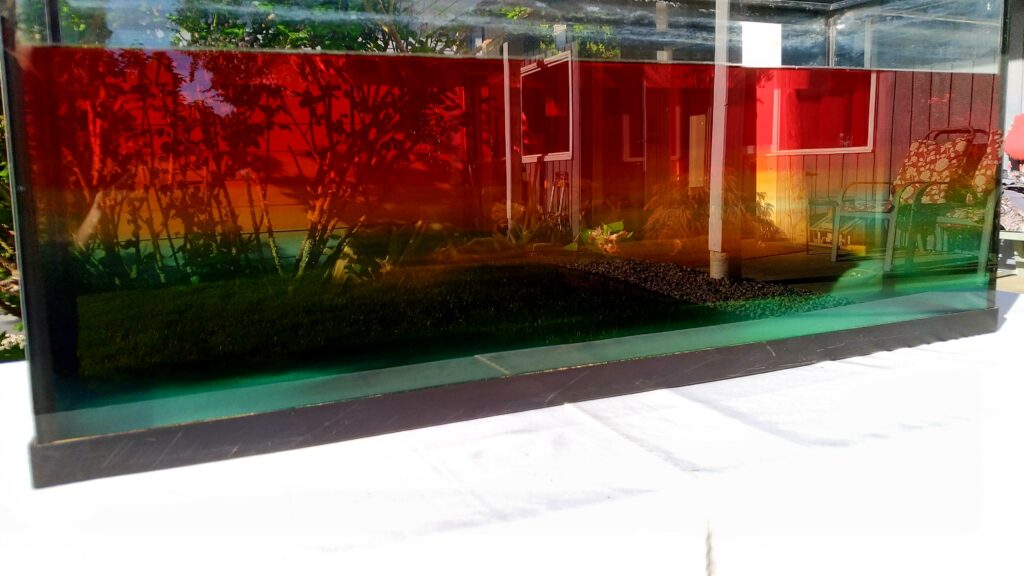

All About Seiches
Despite operating beneath the surface of every large lake, seiches are often poorly understood. To increase public awareness of seiches, LAC built a model of a seiche system in 2020 using a large aquarium. We filmed our seiche model for several hours while subjecting it to an artificial wind on the surface of the tank. The results have been cut into a video that nicely captures the effects of seiches on lake layers over time.
Video Transcript:
What is a seiche, and why do I care?
In this video we demonstrate:
- How the water layers in a lake behave in summer
- How wind affects those water layers
- What a seiche can do to a drinking water intake
- Where plumes travel in a lake
The Inner Workings of Lakes:
In the spring, the sun warms the surface water of a lake much faster than the deeper water. The surface water becomes less dense and remains at the surface, floating in a layer above the cooler denser water below. Three layers form.
- The epilimnion is the warm surface layer.
- The hypolimnion is the cold dense water at the lake bottom, and it often remains around 4°C throughout the year.
- The metalimnion is the transition zone between the warm epilimnion and the cold hypolimnion. The point of greatest temperature difference, and therefore density difference, is called the thermocline, and it occurs within the metalimnion.
Over the summer, the thermocline gradually mixes deeper and deeper into the lake. The surface water cools in the fall, and together these make the water layers unstable, until a windstorm can fully mix the water column from top to bottom. This is called fall overturn.
Now we get to what in the world is a seiche.
When a wind blows over a lake, it pushes the surface water in front of it, and causes it to pile up slightly. The warm surface water pushes down on the cold deeper water below, and a very large internal wave called a seiche is generated. This wave is powerful, and it can be 10-20 meters high, all unseen from the lake surface. The lake seiche travels slowly from one end of the lake to the other, oscillating and deflecting from shorelines as it travels. A seiche wave generates currents and turbulence that rhythmically flow back and forth. These currents can push lake bed sediments into the water, particularly as the seiche sloshes into the ends of the lake and flows in a reverse direction.
A seiche can deliver surface water down to the intake depth before the seiche wave oscillates and returns the intake to hypolimion water. A seiche’s arrival at an intake is usually heralded by increased turbidity and temperature, and that complicates water treatment.
Wastewater Discharge Plumes:
Discharge plumes enter a lake. Water temperature and dissolved materials determine where a treated water plume travels after it is discharged deep in a lake. Warm treated wastewater will rise and diffuse as it travels, and seiches affect where discharge plumes will travel within a lake.
Storm Flows:
Storm flows are yet another thing that can affect lakes.
As a creek or storm flow enters the lake, it will plunge into the water layer that matches its density. As this plume travels into the lake, suspended materials settle out and the plume density decreases, which changes its position in the water column. The inflow plume can flow into one water layer, or split into a mix of: buoyant overflow that travels on the lake surface, interflow that travels into the metalimnion or thermocline layer, or dense underflow that travels along the lake bottom. These plumes are also affected by seiches, and all of this will affect an intake.
We hope you enjoy watching this video of the water movements hidden beneath every lake surface.



